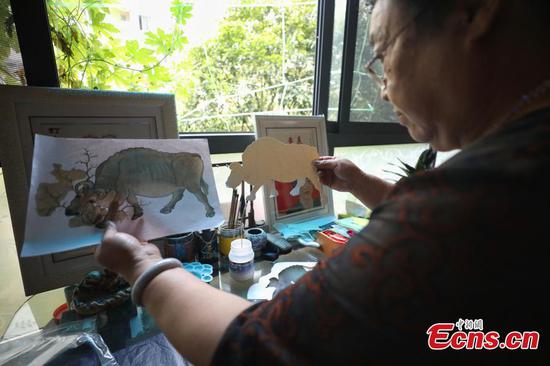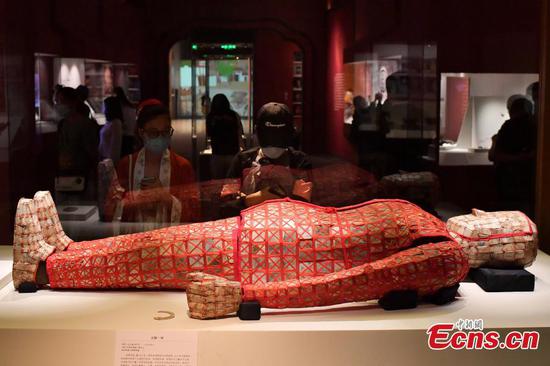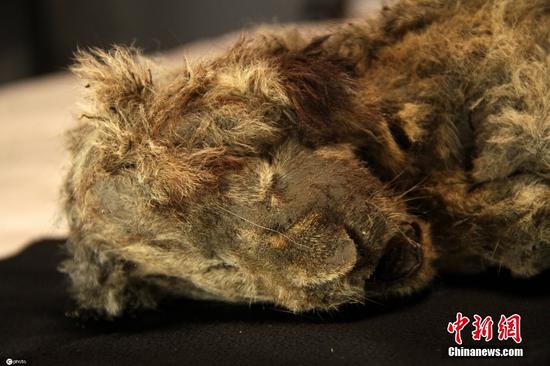A different version of the COVID-19 virus may have been circulating in Lombardy, northern Italy, as early as late summer 2019, a new study shows, suggesting that a wider geographical area and a broader time span should be considered when investigating the origins of the virus.
Researchers from the University of Milan and the Italian National Institute of Health examined 435 throat swabs and urine samples from 156 patients with measles-like skin rashes. A total of 13 patients tested positive for SARS-CoV-2, according to a study published last week on the preprint server operated by the medical journal, The Lancet. The paper is still awaiting peer-review.
None of the positive patients reported any history of travel in the two weeks before the onset of rash. The very first sample that tested positive for the genetic material of SARS-CoV-2 was a urine sample collected as early as Sept 12, 2019, from an 8-month-old child whose serum also tested positive for antibodies against the virus.
"Our study provides strong evidence that SARS-CoV-2 was already circulating in Northern Italy by late summer of 2019 and shows a clear association between measles-like cutaneous manifestations and SARS-CoV-2, " the researchers said.
However, the current evidence of infection is too weak to definitively diagnose these patients as being sickened by the virus, the scientists said. Contamination and false positives for nucleic acid tests of COVID-19 were reported in similar retrospective studies done in other countries.
Another finding in the Italian report is that scientists have detected multiple variants of the novel coronavirus circulating during the pre-pandemic period. "These results confirm recent computational findings that several SARS-CoV-2 lineages had been spreading worldwide at least for several weeks before the first reported COVID-19 cases," the paper said.
Based on the examined evidence, they found that some of the coronavirus' mutations first reported in January 2020 were already present in strains from Northern Italy in October 2019, suggesting that a lineage of the virus substantially different from the strain that first emerged in Wuhan, Hubei province, in December 2019 was already circulating in the region.
This may push back the predicted date of the progenitor SARS-CoV-2 to between late June 2019 and late August 2019, the study said.
"Although it is possible that viruses carrying the mutations were imported into Europe, it is also conceivable that these mutations have evolved in parallel outside China as the virus was circulating in other geographical areas, as also already previously hypothesized," the study said.
A Beijing-based epidemiologist, who requested anonymity, said the study supports the hypothesis that SARS-CoV-2 may have originated and evolved in different parts of the world before the first reported outbreak occurred in Wuhan.
"It gives a reason for scientists around the world to check their lab's freezers, blood banks and other sample stores for traces of SARS-CoV-2 and its relatives," the expert said, adding such retrospective studies have yielded surprising discoveries on coronavirus.
Such is the case of HCoV-HKU1, a human-infecting coronavirus that was first reported in 2004, only to be later found in samples collected in Brazil in 1995.
The journal Nature reported in November that scientists have discovered relatives of the COVID-19 virus in Cambodia's Shamel's horseshoe bats captured in 2010, as well as in frozen bat droppings from Japanese horseshoe bats collected in 2013. These findings suggest that relatives of SARS-CoV-2 may be common in horseshoe bats, even outside of China.
The expert said one of the biggest questions surrounding the multiple-origin hypothesis is that "if the virus has been circulating in other parts of the world, why wasn't there an increase of pneumonia-like diseases in those regions prior to the Wuhan outbreak?"
One answer is that early strains of SARS-CoV-2 may not have been as transmissible among humans as some later mutated variants. The virus may have been attempting to spill over from nature into the human population for years, if not decades, and after numerous trials and errors, it finally accumulated the right traits and suddenly became highly successful at infecting humans, the expert said.
"To know that a different version of the virus was already circulating in Northern Italy can substantiate this proposed explanation," the expert said. "There are still so many questions surrounding the origin of the SARS-CoV-2, and I hope more scientists from other countries can meticulously and bravely reexamine their collected samples and contribute to finding the answers."

















































